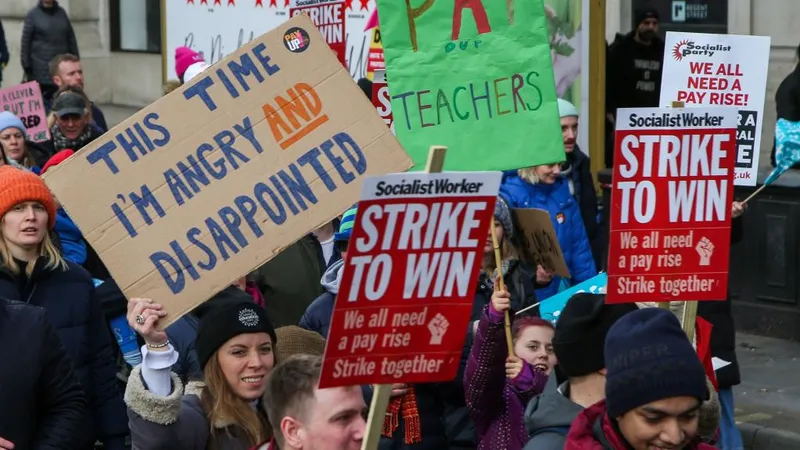LONDON — The UK government is squaring off with unions in a tense standoff over public sector pay, as nurses, teachers, and civil servants demand raises that outstrip the government’s tight-fisted budget. The clash, brewing for months, has spilled into public view with strike threats and heated rhetoric, as both sides dig in for what could be a long, bruising fight.
On April 1, the government missed its own deadline to roll out the 2025-26 pay deal for NHS workers in England, leaving nurses and other staff fuming. The delay, pinned on the government’s decision to stick with the sluggish NHS Pay Review Body process rather than negotiate directly with unions, has sparked accusations of foot-dragging. Health workers, already stretched thin, got a temporary boost for the lowest-paid to dodge minimum wage violations, but the broader pay rise remains in limbo. A report with the review body’s recommendations landed on ministers’ desks by late April, yet no firm offer has materialized.
Teachers are also up in arms. On April 23, the National Education Union’s special executive huddled to plot strike action, eyeing a government offer of a 2.8% pay bump for the 2025-26 school year. The Department for Education called it “appropriate” to keep teaching competitive, but unions aren’t buying it. With inflation creeping toward 3.7% this year, according to Bank of England forecasts, the proposal feels like a pay cut in real terms. Union leaders, still smarting from years of squeezed wages, are gearing up for battle if the final deal doesn’t measure up.
The civil service, meanwhile, is reeling from Chancellor Rachel Reeves’ plan to slash 10,000 jobs and cut running costs by 15% by the end of this parliament. Announced on March 23, the move aims to save £2.2 billion annually by 2029-30, targeting “back office” functions bloated during the pandemic. But unions warn the cuts could gut frontline services, with estimates suggesting up to 50,000 jobs might vanish if the entire salary bill shrinks by 10%. The Public and Commercial Services Union called it a recipe for “chaos,” while Prospect’s general secretary, Mike Clancy, slammed the cuts as an “arbitrary” number plucked to sound efficient.
The government’s December pitch for a 2.8% across-the-board pay rise for public sector workers—covering teachers, NHS staff, and others—was meant to calm the waters. But with inflation outpacing predictions, unions are pushing for more, eyeing reports due in April from pay review bodies that might recommend up to 4%. Reeves, boxed in by a “tight fiscal position,” as Business Secretary Stephen Kinnock put it on April 28, faces a stark choice: cough up billions more or brace for strikes that could paralyze schools, hospitals, and government offices.
Adding fuel to the fire, overseas NHS workers renewing visas are caught in a bind. A higher salary threshold for visa eligibility, effective this year, risks deporting some staff who fall short under the delayed pay deal. UNISON, the UK’s largest union, flagged this as a “cruel twist” for workers already grappling with rising bills.
The government insists it’s committed to fair pay, pointing to a £1,400 annual boost to the National Living Wage from April 1 and ongoing talks with unions. But with no clear timeline for resolving the NHS pay dispute and teachers inching toward picket lines, the mood is sour. Strikes on Hull Trains, driven by a separate pay and conditions row, signal broader unrest, though nationwide rail action has paused after a deal with ASLEF.
As spring unfolds, the government’s balancing act—curbing spending while keeping public services humming—is under strain. Unions, emboldened by past victories, show no sign of backing down. The stage is set for a summer of discontent unless cooler heads prevail.

